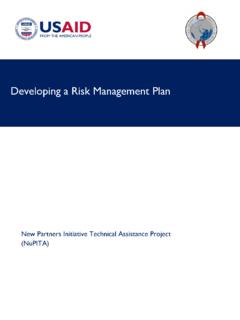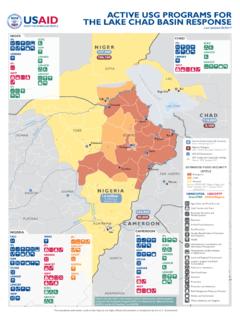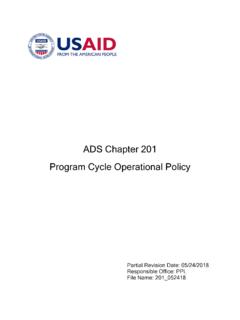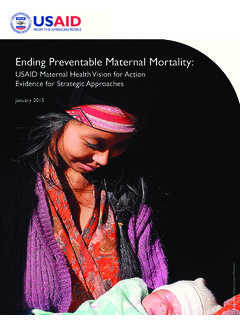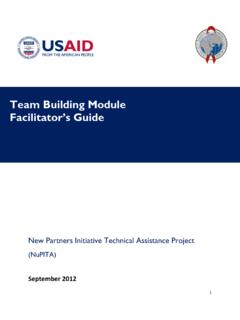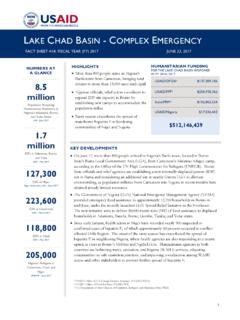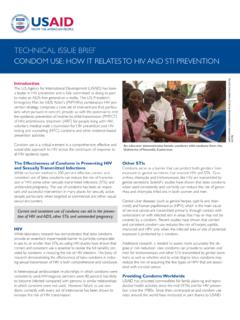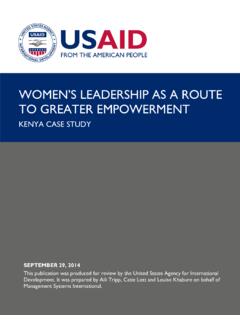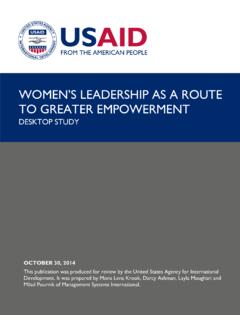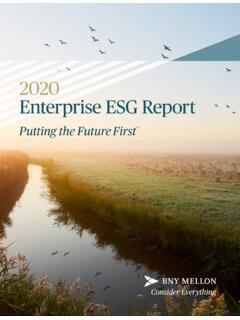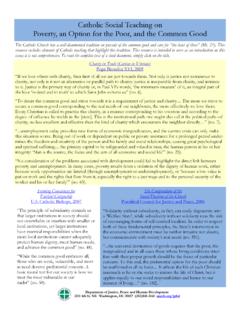Transcription of USAID Private-Sector Engagement Policy
1 Private-Sector Engagement Policy . A business owner in Uganda who received business support. Photo credit: Bobby Neptune, USAID . U S A I D P R I VAT E - S E C TO R E N G A G E M E N T P O L I C Y 1. Table of Contents Private-Sector Engagement Policy Administrator's Message 03. 1. Vision and Purpose of this Policy 04. 2. What Is Private-Sector Engagement (PSE)? 06. 3. The Change We Seek 09. 4. The Case for PSE 11. Propositions: What USAID and the private sector Bring When We Work Together 15. 6. How We Engage 16. 7. Identifying, Assessing, and Managing Risk 21. 8. Putting PSE into Practice 24. 9. PSE Evidence and Learning Agenda 27. 10. What's Next? 28. Appendix A: Private-Sector Engagement Myths and Mythbusters 29.
2 Appendix B: Key Definitions 40. Appendix C: End Notes 49. 2 U S A I D P R I VAT E - S E C TO R E N G A G E M E N T P O L I C Y. Administrator's I am pleased to share with you our new Policy on Private-Sector Engagement . This Policy comes at an exciting time in which Message leaders in both the public and private sectors are figuring out how to take the unique capabilities of each and apply them to problems that neither could address fully on their own. This Engagement can make addressing challenges that once seemed insurmountable very real and achievable. Private-Sector Engagement is fundamental to our goal to end the need for foreign assistance. This Policy is a call to action for staff from the Agency for International Development ( USAID ).
3 And our partners to embrace market-based approaches as a more-sustainable way to support communities in achieving development and humanitarian outcomes at scale. This is based on our premise that private enterprise is one of the most- powerful forces for lifting lives, strengthening communities, and accelerating countries to self-reliance. I believe the future of international development is enterprise- driven. Enterprise-driven development means aligning with private enterprises as co-creators of market-oriented solutions, with shared risk and shared reward. It means recognizing the value of engaging the private sector in development and humanitarian assistance to help shape solutions that achieve sustained impact and can carry forward long after USAID 's support has ended, and reorienting our investments to open markets for firms.
4 Implementing this Policy will require a major cultural and operational transformation in the way USAID and our partners work. We must commit to deepening our collaboration with the private sector in seeking market-based approaches across all areas of our work, from economic growth, power, agriculture, and global health to humanitarian assistance, women's empowerment, education, and addressing crisis and conflict. The approach will require us to adjust our role. In many ways, we will be steering, more than rowing, in an effort to create a force-multiplier that will allow us to work together with the private sector to achieve greater impact than either of us could achieve alone.
5 With a focus on building a freer, more peaceful, and more prosperous world, true to our democratic values, this Policy represents an important first part of a major transformation in the way we operate. Ultimately, increasing our collaboration with the private sector across all areas of our work will make us better development and humanitarian professionals, bring us closer to our purpose of ending the need for foreign assistance, and provide greater opportunities for American businesses. Ambassador Mark Green Administrator, USAID . U S A I D P R I VAT E - S E C TO R E N G A G E M E N T P O L I C Y | Administrator's Message 3. and Purpose of this Policy The private sector is an inextricable stakeholder in driving and sustaining outcomes capable of moving countries beyond the need for assistance.
6 Today, the private sector is playing an unprecedented role in creating and shaping opportunities that improve the lives of the people and communities USAID supports. private sources now represent nearly 90 percent of financial flows to developing The private sector creates nine out of ten jobs in the developing world, and provides an important pathway to It is the driving force behind new innovations that solve problems. It brings expertise to building local markets that match local savings with investment opportunities, and provide countries with the tools to finance their own development. The private sector has the scale and resources to match the complexity of challenges countries face on their Journey to Self-Reliance.
7 Changes in the global development context have increased the alignment of interests between the private sector and development actors. On their own, donor agencies are unable to fulfill their goals for sustainable development. There is growing recognition within the private sector of the need for, and benefits of, investing in the developing world. At the same time, governments are expanding efforts to diversify their economies and connect with capital for investment. In ent addition, the increasing scale, length, and frequency of disasters em and conflicts around the world means that humanitarian actors gag En alone can no longer address the complex needs of crisis- or affected people.
8 The confluence of these trends provides a ect eS. watershed opportunity for USAID , our partner governments, vat and civil society to increase collaboration with the private Pri sector to support countries on their Journey to Self-Reliance. To capitalize fully on this opportunity and reach our goal . ending the need for assistance it is imperative that USAID . increase and deepen our collaboration with the private sector . Thus, this Policy is an Agency-wide call to action, and a mandate to work hand-in-hand with the private sector to design and deliver our development and humanitarian programs across all sectors, and to harness our resources to open markets and provide opportunities for businesses.
9 This Policy is a first step within a larger cultural and operational transformation to expand our Engagement with the private sector to achieve outcomes of shared interest Agency-wide. The purpose of the Policy is to accomplish the following: Set forth the vision and operating principles that will guide and advance USAID 's Engagement with the private sector , with an emphasis on promoting economic growth;. Illustrate ways USAID can consistently and comprehensively integrate Private-Sector Engagement into the Agency's operating model and programming across sectors; and Clarify and harmonize concepts, terminology, and definitions. (See Appendix B.). Through this Policy , we begin the process of institutionalizing Private-Sector Engagement as a core tenet of USAID 's operating model.
10 The Agency's larger Transformation efforts, which include a new leadership philosophy for the Agency, partnering and procurement reforms, skill-building and talent-management, adapting and addressing performance incentives, evidence and learning, and other issues, will support the implementation of the Policy . This Policy is part of USAID 's overall Policy Framework, which articulates overarching Policy goals for achieving our mission and guides the Agency's Policy , strategy, and Successful implementation of this Policy will result in an increase and deepening of our collaboration with the private sector in addressing the challenges countries face on the Journey to Self-Reliance; an embrace of market-based solutions, and support for market systems across sectors; expanded opportunities for American firms; and consistent leveraging of the private sector 's expertise, resources, and investment in addressing development challenges.
